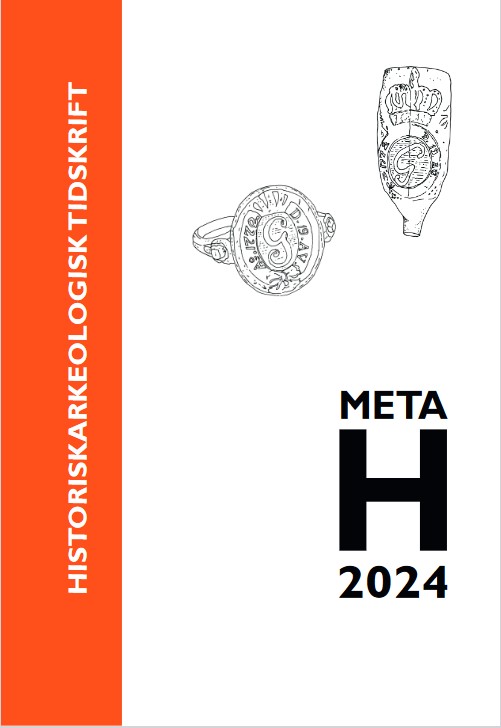Bokningsstenar – betydande spår av de obetydliga
DOI:
https://doi.org/10.59008/meta.2024.25183Abstract
Ore grinding stones – A significant trace of the insignificants. In the summer of 2020, an archaeological excavation took place at Dammen’s blast furnace in Askersund, central Sweden. The site, active between 1642 and 1844, was a miner’s furnace
periodically co-owned by Louis de Geer, a businessman who owned the nearby manor Godegård.
Even though Dammen’s blast furnace was active for over 200 years, the traces of the iron production conducted here were sparce. Besides the large amount of slag and the foundations of two storage buildings, the main result of the excavation was the numerous ore grinding stones used in the process of refining the iron ore, identified by the smallish pits left on the stones’ surface after manually striking the ore with a hammer. In Sweden, this is a relatively unknown find category; few blast furnaces
have been investigated by archaeologists and when ore grinding stones have been identified, they have not received much attention.
At larger blast furnace sites, the process of refining ore was often conducted mechanically with water-powered equipment but at smaller sites this was carried out by hand, usually by women, children and what was referred to as “inferior workers”.
Thus, at Dammen’s blast furnace, the lowest ranking workers had left the clearest traces; 141 stones with slowly worn pits.
Downloads
Publicerad
Referera så här
Nummer
Sektion
Licens
Copyright (c) 2024 Åsa Berger

Det här verket är licensierat under en Creative Commons Erkännande 4.0 Internationell-licens.







